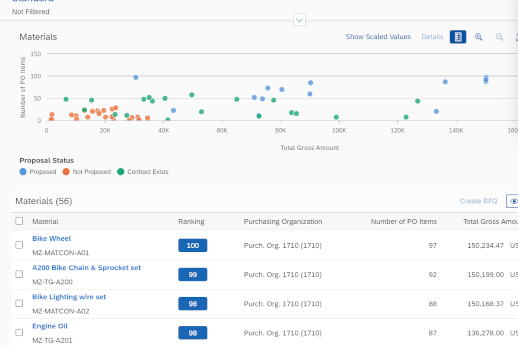An efficient authorization and role concept forms the basis for the secure and smooth operation of your SAP systems. It is therefore essential to continuously deal with roles and authorizations and to adapt the existing structure to new requirements and changing framework conditions.
SAP S/4HANA migration
When moving to SAP S/4HANA, the differences in the authorization concepts between SAP S/4HANA and earlier ERP versions of SAP must be taken into account – to ensure smooth access for users.
Use of SAP Fiori user interfaces
To be able to use the modern and intuitive SAP Fiori interfaces, users also need access to the front-end server. This access is controlled via Fiori roles.
General authorization problems in daily practice
SAP users are often slowed down in their work by missing authorizations, which costs them a lot of time and nerves. How can this be prevented? With the right authorizations that allow tasks to be completed effectively and do not grant unnecessary access to sensitive data.
SAP S/4HANA brings with it various new processes and technologies that did not previously exist in this form in SAP ERP. This is also associated with differences in the authorization concepts between SAP S/4HANA and previous ERP versions of SAP, which must be taken into account to ensure smooth user access.
Because SAP S/4HANA is a comprehensive system that covers various business processes and functions, it is important to control access to these functions based on the roles and responsibilities of users. It can be challenging to set the right permissions for each user and ensure they have appropriate access rights to perform their tasks effectively without granting unnecessary access to sensitive data. It is usually a good idea to analyze the current situation in advance of the SAP S/4HANA migration with the help of an authorization check and derive insights for the future authorization concept.




SAP S/4HANA brings with it various new processes and technologies that did not previously exist in this way in SAP ERP. In addition, there are also differences in the authorization concepts between SAP S/4HANA and previous ERP versions from SAP that must be taken into account to ensure smooth user access.

SAP authorizations are usually created and maintained over years or even decades with great effort. The simplification of processes in SAP S4/HANA leads to the loss of frequently used transactions, which are replaced by new Fiori apps. IT managers rightly ask themselves whether and how they can efficiently transfer authorizations to SAP S/4HANA.

SAP authorizations are often developed without the adjusted default values of transaction SU24. As a result, the profile generator (SU25) cannot develop its full potential. The biggest advantage of the authorization default values with regard to SAP S4/HANA is the reduced effort required for reworking the authorizations of the roles.
SAP Fiori offers modern user interfaces and creates a uniform user experience across all SAP applications and various company processes. Functions that were previously mapped in classic SAP transactions are being transferred to Fiori apps, whereby several transactions can be bundled in one Fiori app, for example. This in turn has an impact on authorizations.
Only by maintaining the authorizations in the back-end and front-end can it be ensured that users can access the required functions and data. The back-end authorizations refer to the access controls to business data and functions stored in SAP systems such as SAP S/4HANA or SAP ERP. These authorizations control which data and functions a user can see and execute in the system. Front-end authorizations, on the other hand, relate to the access controls for the user interface and the applications that can be accessed via SAP Fiori. These authorizations determine which Fiori apps and functions a user can see and execute on the user interface.




Authorizations play a crucial role in the context of SAP systems. They ensure that users can access the right functions, transactions and data to perform their tasks effectively. Conversely, improper authorization concepts lead to delays in business processes – and to resentment among the employees and customers concerned. Having to apply for authorization to access a certain application or data first costs time and nerves.
Authorizations and their concepts in SAP systems are constantly subject to organizational, functional and technical adjustments. It is therefore essential to regularly examine the existing authorization concept and check whether it still meets current requirements. This assessment also includes the question of the extent to which the concept already takes current best practices into account.




Simply complete the form and submit it. We look forward to receiving your request.